Operation Models
Choosing the right operational model depends on the roles of the market actors in the broadband value chain. For this report, three (3) possible roles are identified:
- The Physical Infrastructure Provider (PIP)
- The Virtual Network Operator (VNO)
- The Service Provider(s) (SP)
Different business models arise depending on which roles the market actors take within the operational model.
Figure 1: Vertically Integrated Model
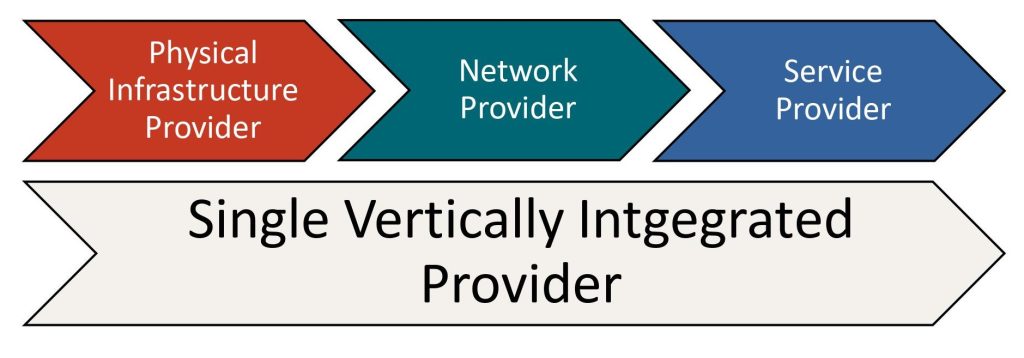
If one market actor takes all three (3) roles, it is said to be vertically integrated, and the resulting business model is referred to as a vertically integrated model. AT&T, Comcast, and Frontier operate in Marin County under this model.
This model is not recommended for the following reasons:
- It would require significantly more ownership investment and ongoing support compared to models that separate infrastructure and service responsibilities.
- Models that separate infrastructure and service responsibilities have proven superior for most public entities because focusing on creating open public infrastructure for private market competition best aligns with public policy, funding, and operations and has proven to be capable of achieving superior access and affordability.
Figure 2: Open Access or Wholesale-Only Network Model
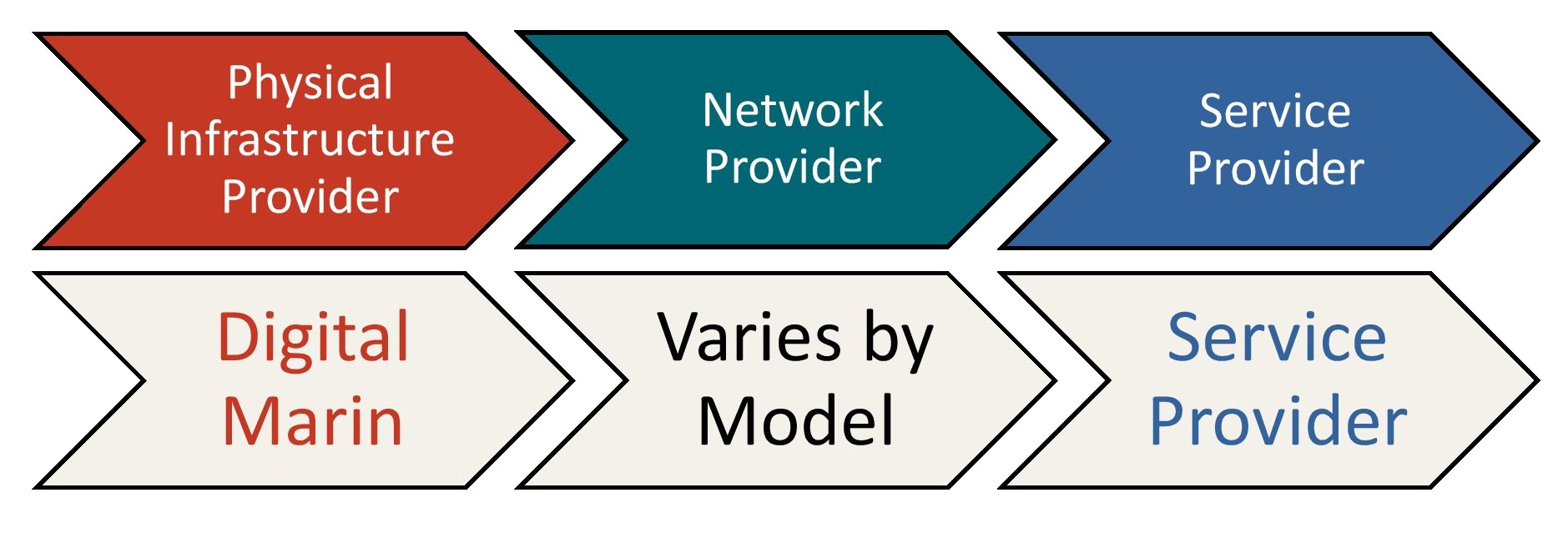
An open access or wholesale-only network model can be created if the roles are separated. An open access network makes the infrastructure available to all market participants at equal conditions. This requires a neutral party, not a service provider, to own and operate or oversee the operation of the infrastructure.
This can take different forms, depending on whether the network owner operates at the physical infrastructure provider (PIP) level alone or also at the virtual network operator (VNO) level. If the network owner is only involved at the PIP level, the network owner decides either to leave the higher layers to market players (i.e., market competition for services) or to contract the VNO role to a third-party market actor with the task of providing end-user connectivity to competing internet service providers (ISPs)
Consequently, three unbundled business model variations can be identified:
- Open Access Dark Fiber Leasing
- Open Access Lit Fiber
- Open Access Virtual Fiber
Figure 3: Open Access Dark Fiber Leasing Model
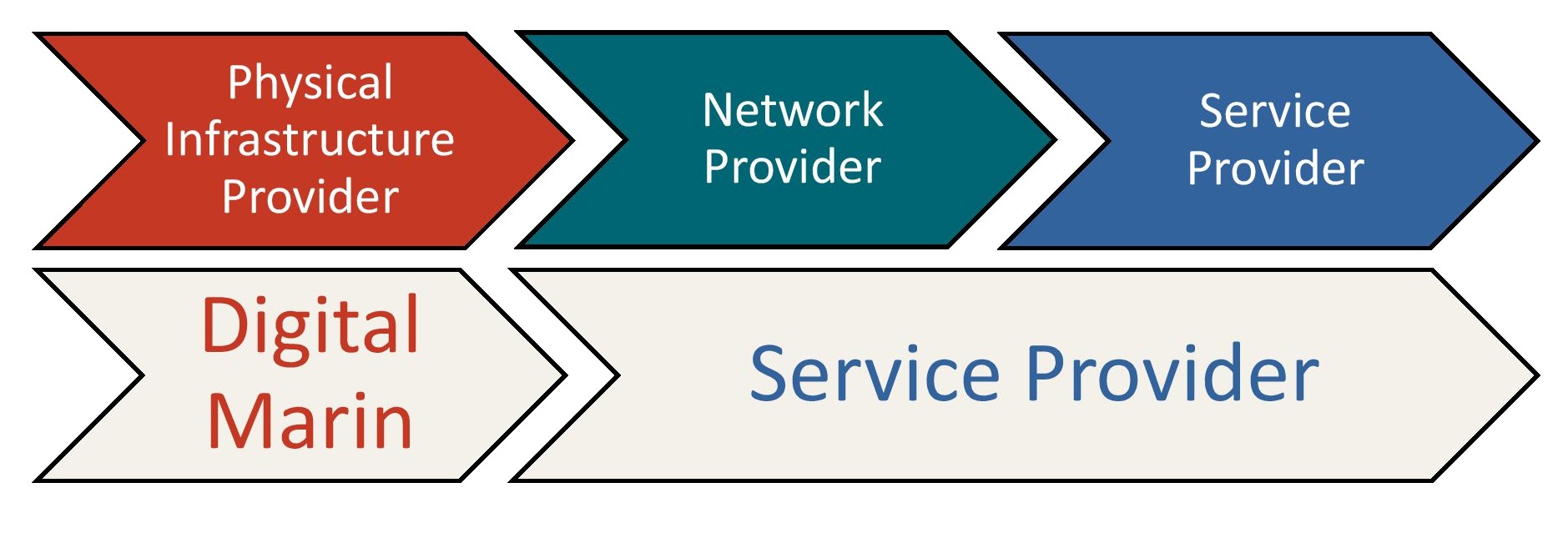
In this model, an entity (typically the public authority or utility) builds and maintains a passive infrastructure (e.g., dark fiber) available to all market actors under fair and non-discriminatory conditions. This entity deploys the passive infrastructure directly or through standard procurement to the market consisting of civil engineering and fiber optic deployment companies but not network operators. The physical infrastructure provider (PIP) keeps ownership of the passive or unlit infrastructure and maintains a dark fiber outside plant. The Huntsville, Alabama, dark fiber network is one example of this model.
In such a model, only the unlit fiber strands are open for competing integrated network operators and Internet service providers to install the necessary electronics throughout the system to sell services. While this arrangement reduces the cost for ISPs to get access to the end users through the sharing of a common passive infrastructure, each provider must still invest in their network equipment resulting in the following challenges:
- Shared fiber strand termination access and colocation facilities must be clearly defined and provided as a part of the model.
- Ownership of the subscriber drop cable, which is the cable installed from the common cable in the rights-of-way (ROW) to the property, must be clearly defined and provided as a part of the model. This is typically bundled with the installation of the electronics inside the property, which will necessarily remain in the internet service providers’ ownership requiring a new installation within the property each time the subscriber desires to change ISPs.
- Each provider in the model will require their inventory of fiber strands to serve subscribers, placing noticeably clear limitations on the model’s ability to scale with competition or innovation.
These barriers have resulted in models labeled as “open access” but operating as vertically integrated public-private partnerships (i.e., only a single provider is available to subscribers). For these reasons, this model is not recommended.
Figure 4: Open Access Lit Fiber Model
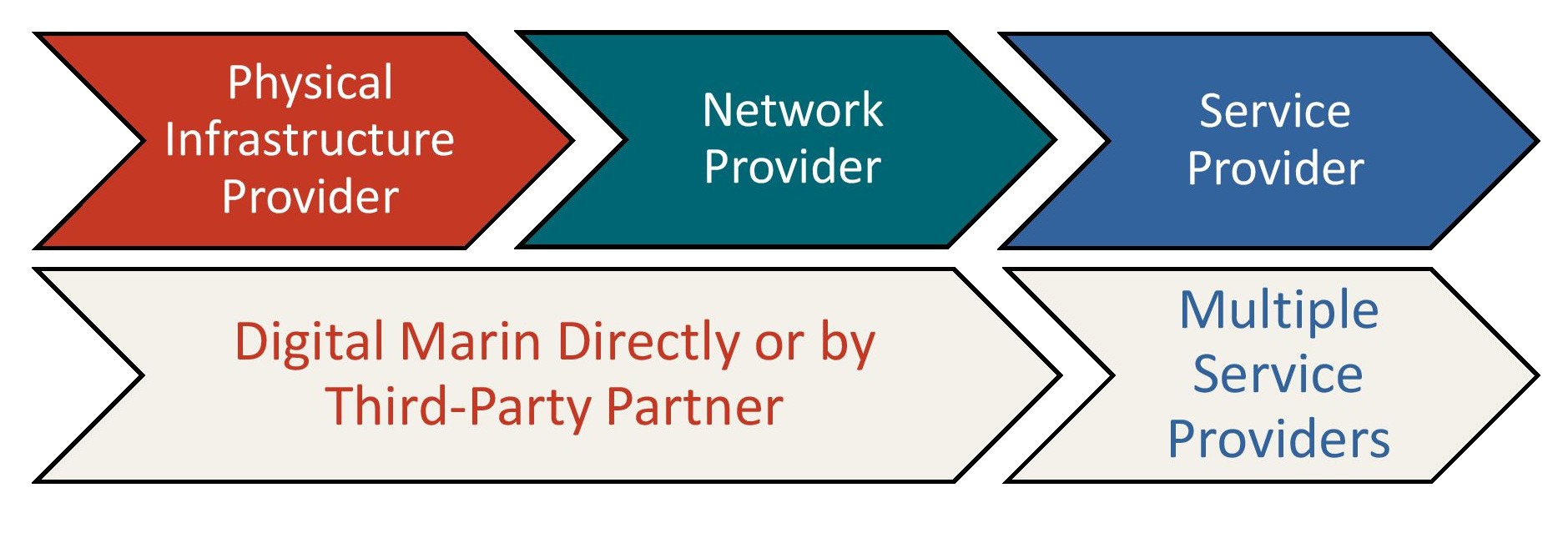
In this model, one or two partnered entities deploy and operate the passive and active layers (i.e., lit fiber), acting as integrated physical infrastructure and network providers. This single or partnered entity builds an open, operator-neutral network over which all Internet service providers can deliver their services to all end users by placing active equipment in all access nodes. The UTOPIA network in Utah is one example of this type of model.
Figure 5: Open Access Virtual Fiber Model
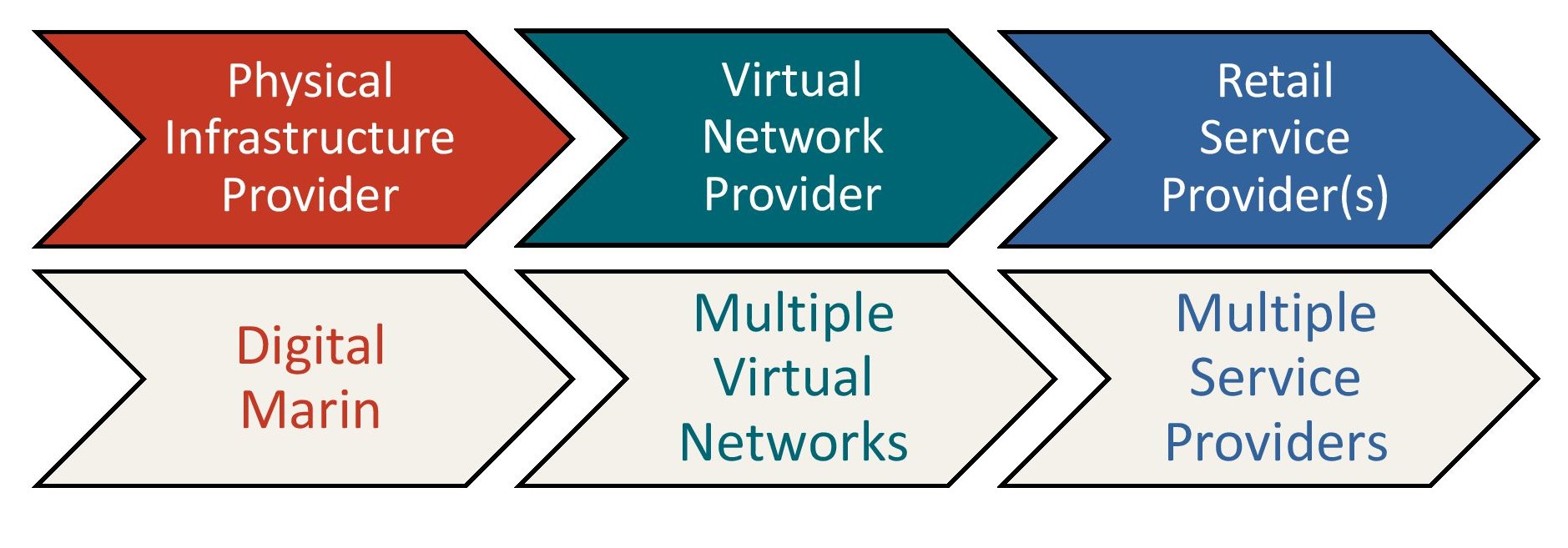
In the Open Access Virtual Fiber Model, the roles of PIP, VNO, and SP are explicitly separated. In this case, the public authority has the same role as the Open Access Dark Fiber Model. Still at the active layer, the VNO role is assigned by procurement to an external entity capable of providing network virtualization. The Ammon, Idaho, fiber optic utility is one example of this type of model. (Woodruff, 2019)
Network virtualization (NV) refers to making network resources traditionally delivered in hardware available in software. NV can combine multiple physical networks into one virtual, software-based network or divide one physical network into separate, independent virtual networks. Network virtualization software allows network administrators to move virtualized assets across different domains without reconfiguring the network. The software creates a network overlay that can run separate virtual network layers on top of the same physical network fabric. The VNO can use this scalable functionality to create a live marketplace for services capable of supporting instantaneous and sweeping change.
The open access virtual fiber model is recommended due to its ability to:
- Separate infrastructure and services.
- Improve affordability by eliminating facilities competition while creating true competition for services.
- Provide an infrastructure-only business plan because the available funding is infrastructure focused.
- Support dynamic competition and innovation.
- Create a sustainable 50-year infrastructure investment model.
Policy and Funding Summary
Selecting an operational model that provides optimal support for an open access fiber solution will maximize the funding opportunities available to Digital Marin. State investments in a similar open access middle mile solution also support the selection of an open access operational model for the last mile. Aligning Marin’s local model with the selected State model will result in an intrinsic compatibility capable of improving operational efficiencies and reducing both capital and operational costs by creating a true “plug and play” option where any community can join Digital Marin by simply plugging into the State’s open access network. This will greatly reduce the technical, operational, and investment barriers that would normally be associated with network expansion essentially providing a path for the repeatable, non-contiguous expansion that will be required to address the existing patchwork of unserved and underserved properties.
